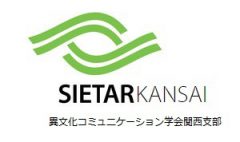Presenter: Prof. Koichi Ando (Otemae University)
Date: Sunday, May 11, 2013 (2:00pm~4:00pm)
Place: Nishinomiya City Daigaku Koryu Center (Seminar Rm1)
ACTA Nishinomiya East Bldg 6F,
2 minutes from the North exit of Nishinomiya Kitaguchi Station,
Hankyu Kobe Line http://daigaku.nishi.or.jp/info/acessmap.html
Tel: (0798)69-3155
Fee: Free for members and students, 500 yen for non-members
Language: English
There will be an informal dinner gathering afterwards. Please let us know if you would like to join it when you come to the presentation.
Summary of the Presentation:
In 1973, the Japanese Bilingual Bicultural Education Program (JBBP) in San Francisco Unified School District was launched. This is the first Japanese/English bilingual education program in the U.S. public school system. The JBBP is still in existence and going strong and one of the most popular programs today.
The demand by the 3rd generation Japanese-American (Sansei) parents to establish a bilingual program for their children whose native tongue is English met strong opposition from the public. The program, however, was finally approved and the JBBP opened its door with 3 classes from K to 2.
Why did English speaking parents seek, demand, and organize a bilingual education program for their children in the public school system? I’d like to address this question from the minority Americans’ point of view in the context of the Japanese American history.
The presenter, who belongs to the same generation of the Sansei, worked as a teacher’s aide at the JBBP and was active in the Asian American community during the 70’s to 80’s. The presentation will focus on the theme of JBBP as a minority movement.
The Presenter’s Profile:
Koichi Ando was born in Nagano, Japan in 1950. After graduating from Meiji University he went to the US in 1974. He majored in multicultural education at San Francisco State University and graduated with an MA in Education.
He taught at JBBP as a Japanese-speaking teacher’s aide, and later became active in the Asian-American community. He also worked as a social worker for immigrants and seniors (Issei). In 1985 he was one of the founders of the Japan Pacific Resource Network (JPRN) which has been instrumental for bridging the minority groups between the US and Japan. He moved to Hawaii in 1987 to teach Japanese at the University of Hawaii. He then assumed a position as the director of International Education at Western Oregon University in 1989. He also became active in the field of international education and elected as chair of the northwest region for NAFSA, Association of International Educators.
In 1998, due to his father’s illness he returned to Japan after 24 years of absence.
He is currently a professor at Otemae University where he teaches courses related to the Multicultural Education and International Relations. As the director of the international Exchange Center he is responsible for the international exchange programs, international students, study abroad programs, and LEO/GJS English programs. He lives with his wife, Shirley, a Filipino- American, in Kobe. Their daughter, Mayumi, is a graphic designer and son, Sen, is an architect. Both live in New York City.
